
Beautiful buttery croissant
During Passover, Sydney and I have had numerous requests for gluten free croissants. We have created recipes for our gluten free clients, friends, and family members. I must admit the individuals who are gluten free seem to grow each year. My nephew was born with Celiac disease.
Celiac disease is a digestive disease that damages the small intestine and interferes with absorption of nutrients from food. People who have celiac disease cannot tolerate gluten, a protein in wheat, rye, and barley. Gluten is found mainly in foods but may also be found in everyday products such as medicines, vitamins, and lip balms. Creating a pâte croissant, gluten free, was a labor of love for Sydney and I!
Pâte à Croissant Dough, Gluten Free:
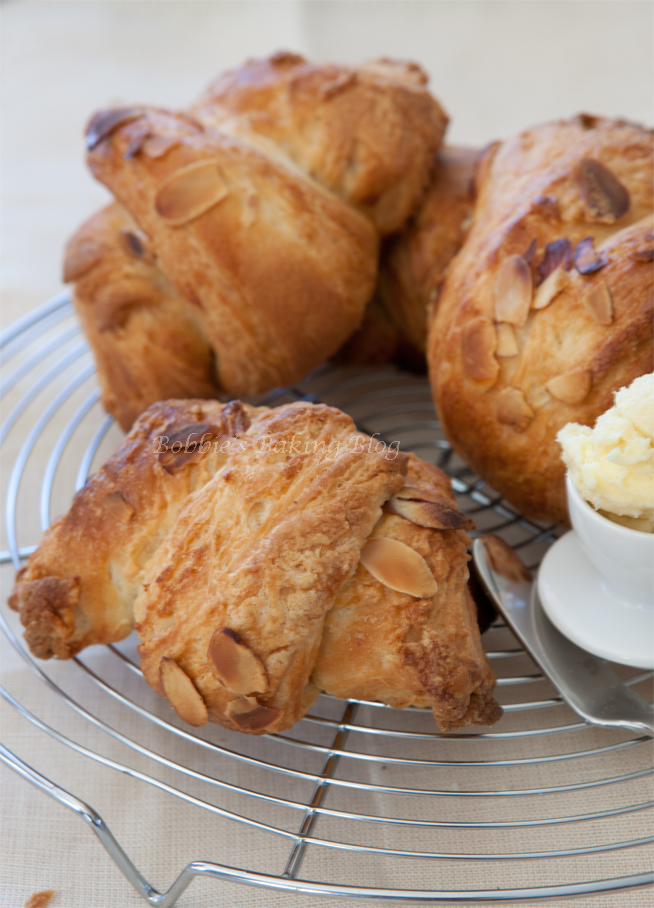
The additions of almonds and almond cream is always special.
244 grams/ 1-cup whole milk, warm about 35 degrees C/ 95 degrees F
110 grams/1/2-cup heavy cream, warm about 35 degrees F/ 95 degrees F
29.9 grams/ 1.3 ounces fresh yeast or 13 grams dry yeast/ 1 Tablespoon, plus ¼ -teaspoon
4 grams/ 1- teaspoon sugar
18 grams/1 Tablespoon salt
50 grams/ ¼-cups brown sugar, granulated white sugar may be subsituted
300 grams/ 1-7/8-cup sweet brown rice flour
120 grams/ 3/4-cup sorghum flour
120 grams/ 1/3- cup rice or corn starch
9 grams/ 1-tablespoon xanthan gum
Beurrage Package
340 grams butter, cold
10 grams/ 3 1/2-teaspoons rice flour
21 grams/ 1-Tablespoon sorghum flour
Prepare your mise en place. In a small bowl whisk the flour and set aside covered.
Détrempe:
If using dry yeast: proof the yeast with the 110grams/ 1/2 cup warm cream, 4 grams/ 1-teaspoon sugar, and yeast. Adding the yeast to the warm cream and then the sugar allowing it to sit for about 7 minutes.
If using fresh yeast:
a. Dissolve 1 teaspoon sugar in 11o grams/ 1/2 cup cream, warmed to 90°F – 95°F
b. Add crumbled Cake Yeast to sugar solution.
c. Stir yeast until completely dissolved.
d. Let mixture stand until yeast begins to foam vigorously (5 – 10 minutes).
e. Add mixture to remaining ingredients.
In the bowl of a standing mixer add the yeast mixture, the gluten free flour mixture (reserving 60 grams/ 1/2-cup flour if needed), and the brown sugar whisk together, by hand, and then whisk in salt.
Using your dough hook on low speed add the warm milk until the dry ingredients are moistened. Raise the speed to medium (#4) and amalgamate for about 4 minutes. The dough should be silky, smooth, pulled away from the sides of the bowl, and will still cling to your fingers slightly.
Place the dough in a 4-quart bowl 0r dough bucket that has been lightly greased with butter or cooking spray. Cover the bowl with the lid or plastic wrap. Place the dough in a room temperature room (26 degrees C/80 degrees F ) for 30 minutes. If the room is colder preheat your oven to 150 degrees, turn it off, and the oven should register at 26 degrees C/ 80 degrees F. Place the dough in the oven.
Using a greased rubber spatula, gently fold the dough.
Cover and place in the refrigerator for at least 2 hours to 8 hours.
The Beurrage:
Cube the butter into dice size pieces. I found the best way to combine the butter with the GF flour, is to place the cold cube butter and 25 grams of flour in the bowl of your standing mixer on low speed, with the paddle attachment, mix the butter and flour. Once the mixture is amalgamated shape into a 28cm x 28cm, 9×9-inch square (no thicker than 3/8 of inch). The butter should still be cool but workable- about 16 degrees C/ 60 degrees F.
Use it right away, the temperature must be at 16 C/ 60F to laminate properly.
Pâton:
**Laminate the dough
Take the dough from the refrigerator and roll out to 31 x 31 cm/ 12.5 x 12.5 –inches. Place the barrage (butter square) diagonally in the center of détrempe (dough) using the back of knife mark the dough at the corners of the butter, remove the butter at form flaps where the marks are. Roll the flaps a little. Now moisten the flaps slightly place the butter back into the center, diagonally. Wrap the butter by securely overlapping the flaps slightly. Wrap the pâton in plastic film and allow it to rest in the refrigerator for 30 minutes, but no longer.
** The laminating method is one Rose Levy Beranbaum uses, I believe it works best.
First Turn:
Place the dough seems side up on a floured marble board. Keep your work surface lightly floured, gently roll the pâton into a long rectangle about 50 cm/20 inches long by 18 cm/ 7inches wide. Brush off the flour from the dough’s surface and give it a business letter fold (folding into thirds). Wrap the folded dough in plastic film, lay on a parchment paper lined ½ baking sheet, and allow it to rest in the refrigerator for 40 minutes. Mark the paper to keep track of the turns. I generally like to complete a total of 6 turns, but a minimum of 4 turns is fine. The dough will let you know!
Second turn through four or sixth turns: (you may do up to six turns if the dough allows)
Start with a clean work surface that has been lightly floured. Position the dough so that the spine is faced to your left (like a book) and press down the edges of the dough with a rolling pin to keep them straight. (The upper part tends to roll out more than the bottom part). Roll and fold the détrempe the exact same way, but turn it over occasionally to keep the seams and edges even. Be sure to roll into all four corners of the détrempe, and use a pastry scraper to even the edges. A total of four turns should be completed; the third turn can have a double fold equaling four turns.
To Shape the Croissants:
Begin with a cleaned flour workspace.
Roll out the dough to 60 cm/24-inchs by 43cm/ 17-inches.
Brush off all the flour. Fold the dough lengthwise so it ‘s 15cm/6-inche/ by 56cm/22-inches. Using a croissant cutter cut across the long side. Brush off all the flour. Fold the dough over lengthwise.
Damp a cloth to keep your hands moisten while stretching the triangles.
Using a croissant cutter (or a pizza cutter) begin to cut, if using a pizza cutter cut a triangle cut through both layers all the way to the other side. Open the folded triangles, so for every full cut there are two triangles formed.
Shape one triangle at a time, keeping the remaining triangles covered with plastic wrap.
Use the scrapes of dough to place in the top of triangle, keep them covered as well.
Forming the Croissant:
1. Cut the triangle.
2. Unfold the triangle carefully, cut along the fold to separate.
3. Gently stretch the triangle twice it’s original length about 23 cm/ 9-inches long.
4. Enclose a piece of scrape dough to pump up the middle.
5. With the point facing you roll the dough towards you, gently moving your hand down out to the side.
6. Curve the pointed ends of the rolled croissant to form the traditional shape.
Egg Wash Glaze:
50 grams/1 whole egg
14 grams/ 1-tablespoon heavy cream, half and half, milk or water
Sugar for sprinkling, optional
Baking the Croissants:
Preheat the oven to 218 to 232 degrees C/ 425 degrees F, arrange the oven racks so one rack to the lower and upper positions. Prepare the egg wash and very lightly with a pastry brush, brush the egg wash onto the croissants.
Open the oven, spritz the oven generously with spray bottle of water and quickly close the door. Open the oven door again, slide the croissant sheets into oven and re spritz. Turn down the oven temperature to 240 degrees C/ 400 degrees F. after about 10 minutes rotate the croissant sheets. Reduce the oven temperature to 191 degrees C/ 375 degrees F and continue to bake the croissants till deep golden brown, internal temperature should register at 99 degrees C/ 210 degrees F. (about 8 more minutes). They will finish baking while they cool.
Cooling the Croissant:
Once the croissants have achieved the color and correct internal temperature, remove from the oven and transfer to a cooling rack for about 20 to 30 minutes.
Serve.

Voila!

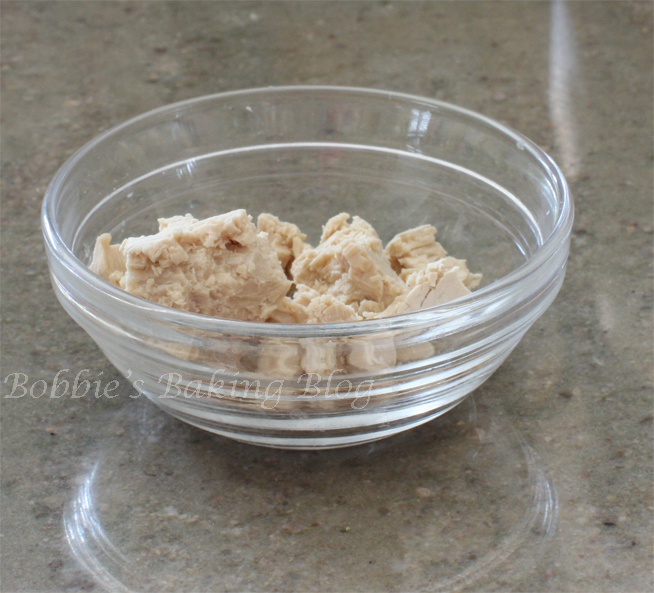
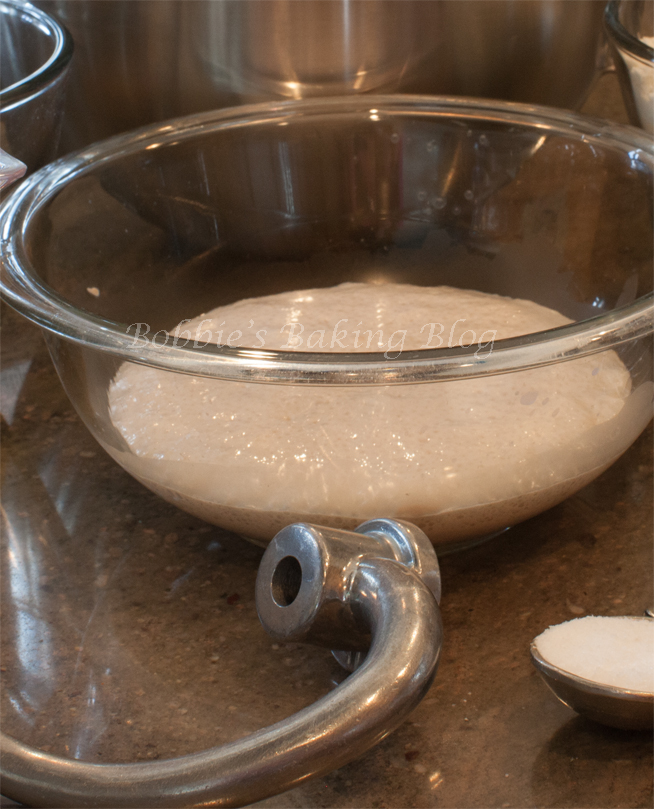
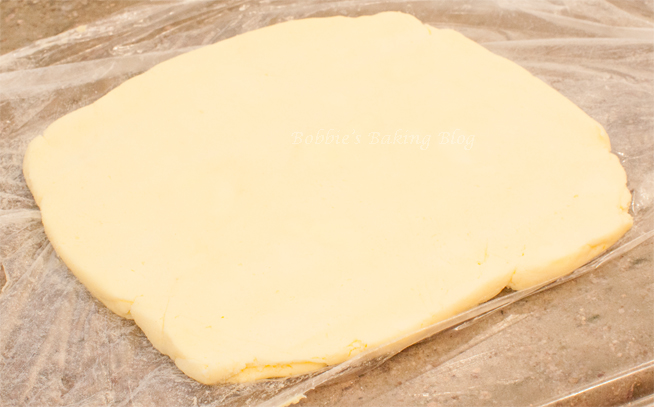
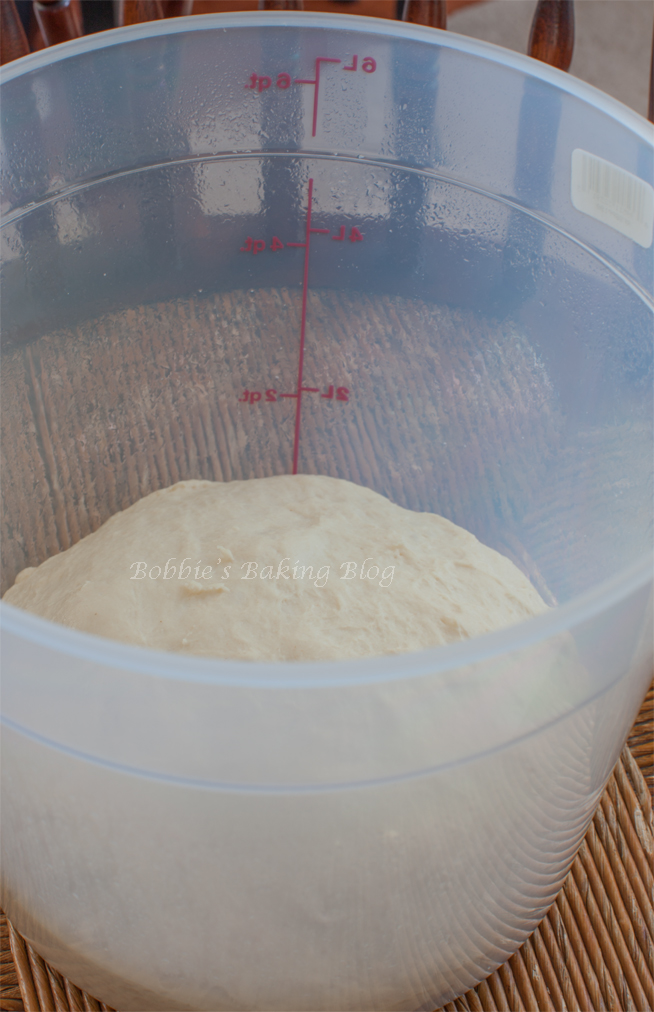
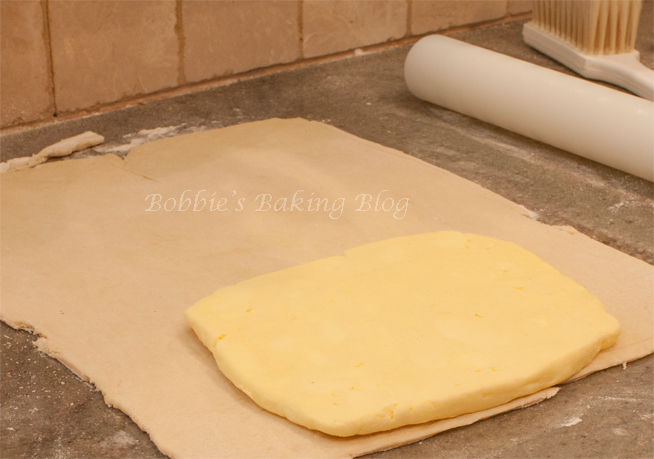
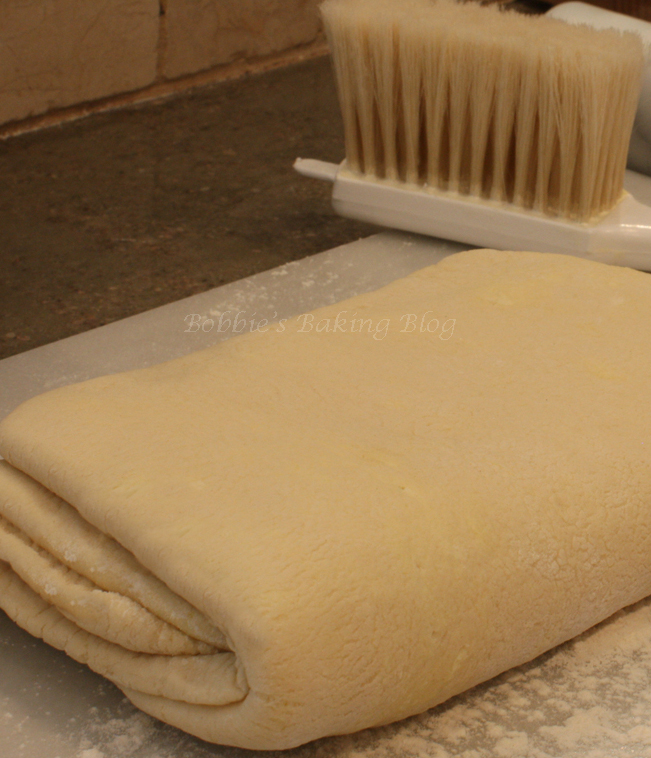


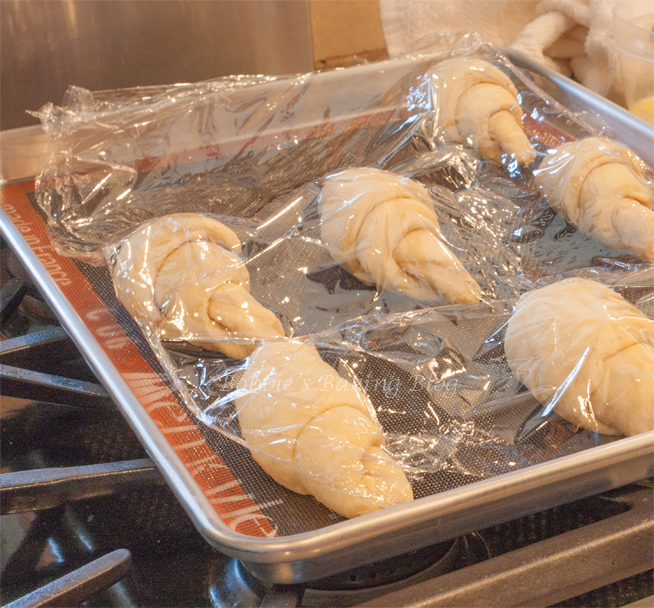





hi Bobbie, great recipe but not good for Passover….I wanted to share this as a gluten free recipe…it looks great and I’d like to try it, but there were a lot of comments on the ingredients including the yeast and rice components not being allowed for Passover….just thought I’d share that.
Cheryl, I called a Rabbi, a friend of mine suggested, he confirmed all the ingredient were in croissants were alright The Passover Seder . The may eat rice and yeast. The food that need to be avoided are wheat, barley, rye, spelt and oats.I appreciate your concern, bit assure you and all my readers the gluten free pâte croissants are Passover safe. Ashkenazi Jews,however follow a stricter guideline.
Gorgeous! Can’t wait to try them!
Thank you!
Hi Bobbie – these are beautiful. I am making them right now. A couple of questions. I am going by the gram weights rather than volume measures – I think the flours might be more in volume? 300 grams = 7/8 cup? Those conversions are always tricky depending on how people measure the flours, which is why I am happy using weights.
I don’t have sweet brown rice, but I used sweet white rice – it is hard to find a source for sweet brown here. And I also used an AP GF mix that has x-gum included – primarily starches (Cup 4 Cup).
And what % fat is your cream? I’m guessing it is a higher fat content than regular store bought heavy cream, yes?
Thanks so much.
Lisa, the sweet white rice is fine to substitute, I have never used a gluten free mix could you tell me the starches. King Arthur has multi-purpose mix and claim, there is “no need to mix together the many different flours most gluten-free recipes call for; simply substitute our blend instead.” I would hate for you to be adding more than needed. The cream is 48% fat, use the highest fat whipping cream available. Yes 300 grams is correct I just realized the dry cup measurement is 1 7/8. However it is better to weigh. I hope this does not inconvenience you. If you have anymore questions please don’t hesitate to contact me.
Thanks for the info, Bobbie. I did stick to the gram weights for the flour. I am a big fan of weights for dry measures – so much more accurate. I used a total of 520 grams, adding them up. About 60 grams of which was sweet white rice flour. The rest was C4C which is made up of cornstarch, white rice flour, brown rice flour, milk powder, tapioca and potato starch and xanthan gum. Looking forward to croissants!
I am so glad.
These look amazing! I can’t wait to try the recipe. Thank you so much for sharing!!
Thank you, please let me know how you like the GF croissants.
These look delicious! I’ve been missing real croissants since I found out about my wheat allergy a year ago and thought I’d just have to live without. I will definitely be making these, thank you for the tutorial!
I am happy to hear I was able to bring croissants back into you culinary world.
Thank you, I’ve just been searching for a recipe for gluten free croissants for a while and yours is the greatest I have found out so far. However, what about the conclusion? What i do not realize is in fact how you are not really a lot more well-preferred than you may be right now. You are very intelligent.
No way, I can’t believe these are GF and look so fabulous!!!
I was on a GF diet for several months and had great problems with making a GF bread, but haven’t even tried my hands on croissants since I thought it’s impossible to make them. Apparently, it’s possible. I’m in awe.
Thank you
They look amazing. My son is gf and has never had a croissant! I would love to be able to make these for him! Thank you so much!!!
Wendy, I am so happy to help. If you have any question please let me know.
Do the croissants need to rise before they bake? Is it ok to keep the formed croissants in the refrigerator over night, bringing them to room temp before baking?
Linds, yes the croissant need to proof prior to baking; they should double in size. It is fine to place them in the refrigerator overnight, they will still need to proof prior to baking.
Too bad these didn’t work out for me =( I proofed them over night in the refrigerator and then proofed them before baking, at room temp. They are very doughy and busted in the middle and did not keep their shape.
Linds, I would like to help figure out what happened and why. Maybe together we can get the croissants to work out for. Croissants can be temperamental and the gluten free croissants take some practice.
I am trying them again with a change in the flour. I used a premixed flour before.
Linds, I’m glad to here you are trying again. It is not necessary to proof overnight; unless you want to. 40 minutes between turn is perfect, and when shaping they be proofed once shaped(unless it is too warm in your kitchen).
Ok so the second time I made them, I used your flour combo and made more turns, but when I proofed them it was too warm in the kitchen and a lot of the butter melted, but other than that, I think they would have turned out perfect! I added homemade marzipan…yum!!
I am glad you tried again. When during the process did your kitchen become to warm. There are a few tricks depending on what step your at.
It was during the rise before baking.
Linds, try shaping the croissants and placing them back in the refrigerator for 30 minutes. After 30 minutes proof them.
Hi Bobbie!
First things first: I love your blog! I’ve been addicted since I found it! Keep up the great work! Now, regarding this recipe, the first step says to whisk the flour – by that do you mean whisking the flours, the starch and the gums together? And THEN reserving 60 grams? Or just reserving 60grams of the RICE and SORGHUM flour? I’m confused. And what would this be used for later? Flouring the work surface? (I’m sorry if these questions seem dumb, I’m a novice I swear! haha) I’d appreciate any info, I want to make sure these come out perfect! 🙂 Thaaanks! 🙂
Hi Chris, I am glad you like the blog. No question is ever dumb: whisk the flours(GF) and gums to homogenize the mixture, reserve 60 grams in case the dough is too sticky, add about 15 grams at time till you have a silky dough. You can always add more, but removing or wetting is tricky. If you have extra mixture, left over, use to flour (GF) the work surface, I forgot to write you will need to mix extra for flouring the work surface ( about 50 grams). Hope this clears thing up..Bobbie
Chris, I am so glad you asked those questions! I have a certificate in professional baking from culinary school and I had the same questions you did! I kind of guessed at the answers and went ahead: the dough is about to go into the fridge for its 2-8 hour rise/rest…This recipe is my first attempt at gluten-free baking: my statistician, who has Celiac, begged me to try to make her gluten-free croissants, and we’re having a baby shower for her this coming week, so I thought it was a good opportunity. A couple friends thought I should start simpler, but I like a challenge! And I’ve made traditional croissants a few times…I’ll be thrilled if they come out looking half as beautiful as the photo!
Sydne, I am pleased you like the pictures. And if you have any other questions please feel free to let me know.
Ok, I made the croissants! They taste nice and buttery, but they rose very little during the proofing (so they’re small), and the texture just isn’t flaky! I knew at least some of the texture would be sacrificed because of the lack of gluten, but the croissants in your photo just look like they’d be flakier. Any thoughts? Tricks? By the way, after the 5th turn, I left the dough in the refrigerator overnight, then let it come to room temperature for 15 minutes before rolling out, as I think Beranbaum suggests…
I think you did everything fine; except due to the gluten free texture I wouldn’t allow the dough to rest at room temperature for 15 minutes, generally 5 minutes, in warm weather, is perfect. You might want to try a little more xanthan gum (about 5 grams). How long did you allow the rolled croissants to proof?
I proofed for 2 hours, the length of time I’ve used for regular croissants. The 15-minute rest may have been too long, though. I’ll probably try again in a week or so with more xanthan gum and a shorter rest. Thanks!
Your welcome
I’ve always loved croissants! Just wondering if I could substitute something else (like natvia) for the sugar? I also can’t have dairy, but i’m guessing I couldn;t sub anything else for the cream… or do you think coconut cream and milk would work?
Anna, I haven’t work with sugar substitutes so I cannot answer that question, however you may substitute water or milk for the cream. Sweet Baking
Bobbbie
oh no, failing miserably. on 1st roll, the butter is coming through the dough everywhere. The only change was sprouted amaranth flour instead of sorghum (read online it was an acceptable sub). My first time making croissants and watched youtube videos for the processes… any help? I guess we’ll keep going and make whatever comes of it.
Claire, croissants are complicated to start with, gluten free is a a tad harder. Add an extra 9 grams/1-Tablespoon to the GF flour mixture for the beurrage. If the weather is warm or the kitchen is warm (above 22 degrees C/ 72 degrees F) place the the dough in the refrigerator if starts to proof during the turn or when you begin to roll. Hope this helps! Bobbie
Your croissants are lovely! I am about to try making some with my superfine rice flour blend tomorrow. I already have the dough and butter chilling. I hope mine turn out as well as yours did. They are beautiful! Keep up the great work!
Wow! These look incredible! I can’t believe they turned out so well using the flours and starches that you used. My hats off to you. I will making some tomorrow using my superfine rice flour blend. Wish me luck!
Good luck Carla!